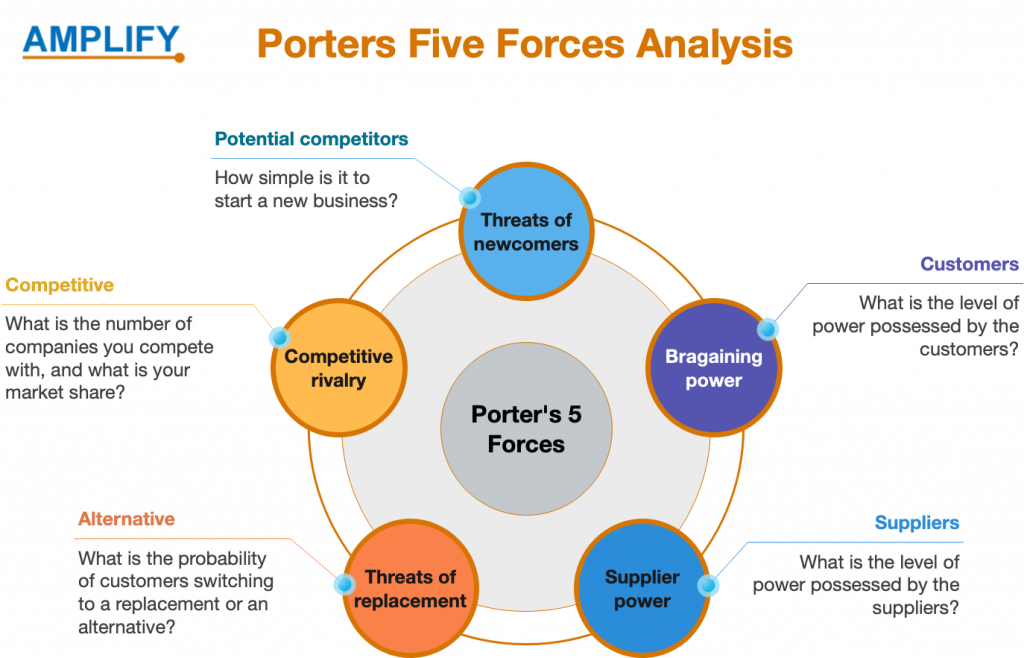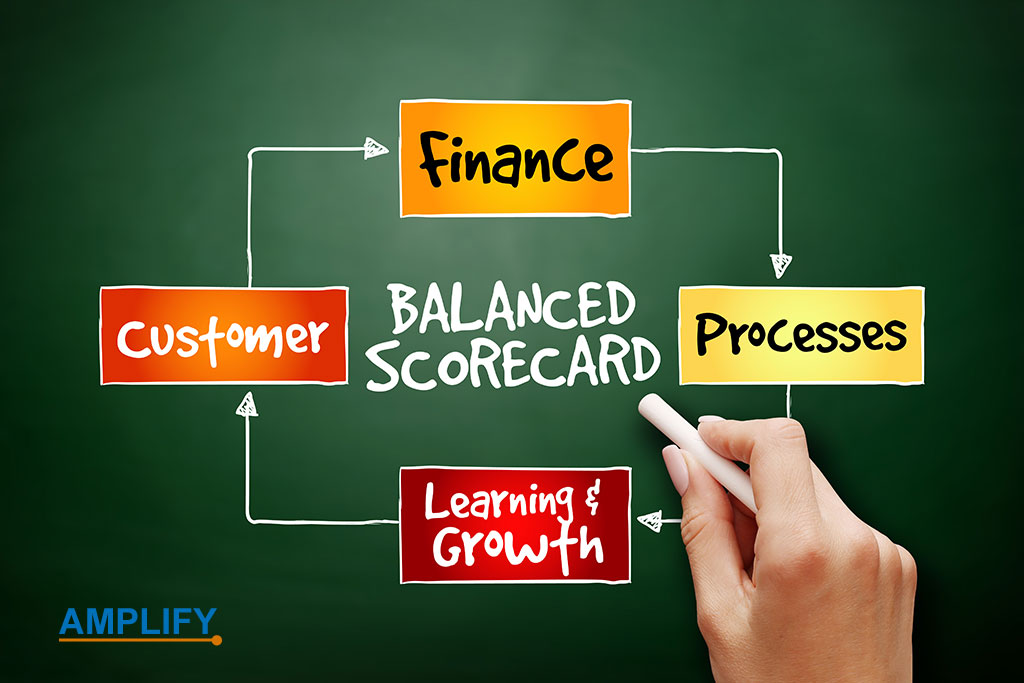Business Models Explained
A business model is a company’s strategy for creating, delivering, and capturing value. It encompasses the fundamental structure and strategy of a business, such as how it generates revenue, manages costs, and creates sustainable competitive advantages. Industry- and company-specific business models vary, but the following are some common ones:

Business Models
Affiliate marketers promote and sell items and services for merchants to earn commissions.
The affiliate marketing business model is a strategy in which individuals or companies (affiliates) earn commissions by promoting and selling products or services on behalf of another company (merchant). It operates on the basis of a mutually beneficial partnership, where the affiliate drives traffic and leads to the merchant’s website, and in return, receives a commission for each successful referral or sale.In affiliate marketing, affiliates typically join affiliate programs offered by merchants or affiliate networks. They receive unique tracking links or codes that they use to promote the merchant’s products or services through various channels such as websites, blogs, social media, email marketing, or online advertising. When a user clicks on the affiliate’s link and makes a purchase or completes a desired action (such as filling out a form or signing up for a service), the affiliate earns a commission based on a predetermined percentage or a fixed amount.
The affiliate marketing business model can be beneficial for various parties involved in the online marketplace:
Merchants: Companies or individuals who have products or services to sell
Affiliates: Individuals, bloggers, content creators, influencers, and website owners
Consumers: Affiliate marketing can benefit consumers by providing them with reviews, and access to products or services
Affiliate Networks: These platforms act as intermediaries, connecting merchants with affiliates providing tracking, and payment systems
The affiliate marketing model benefits both affiliates and merchants.
One of the key advantages of the affiliate marketing model is that it allows individuals or businesses to monetize their online presence and audience without the need to create their own products or services. Affiliates can choose from a wide range of products or services in various niches, selecting those that align with their target audience and interests.The affiliate marketing model benefits both affiliates and merchants. Affiliates have the opportunity to generate income based on their marketing efforts, without the need for inventory, customer service, or product fulfillment. Merchants, on the other hand, benefit from increased exposure, expanded reach, and potential sales or leads generated by the affiliates’ promotional efforts.
Summary
Overall, the affiliate marketing business model provides a win-win situation for affiliates and merchants, allowing individuals or businesses to earn passive income by promoting products or services they believe in, while merchants can leverage the marketing efforts of affiliates to drive sales and expand their customer base.
The Amazon Affiliate Program (also known as Amazon Associates), Commission Junction, ShareASale, and ClickBank are just a few examples of businesses that make use of the affiliate marketing business model. These platforms connect affiliates with a wide variety of merchants and provide the tools and resources required to track referrals, manage commissions, and maximize performance. Affiliates can use these platforms to connect with merchants.
The agency-based business model refers to a business structure where a company acts as an intermediary or representative between clients and various service providers
The term “agency-based business model” refers to a business structure in which a company acts as an intermediary or representative for several different service providers on behalf of its clients. The agency acts as a go-between for its clients, easing the process of transactions and providing them with specialized services tailored to their requirements. The following is a list of essential components that make up the agency-based business model:
Representation of the Client: Agencies are responsible for representing their clients and working on their behalf to locate and acquire services from third-party providers. They ensure that clients and service providers can effectively communicate with one another and work together by acting as a bridge between the two parties.
Network of Service Providers: In most cases, advertising agencies will keep in place a network of service providers or freelancers who specialize in various fields. They take advantage of this network to provide their customers with a comprehensive selection of services, catering to a wide variety of requirements such as marketing, design, development, consulting, and many more.
The agency-based business model is ideal for small and medium-sized businesses, startups,
professionals, companies expanding into new markets, and enterprises with complex needs.
Project Management: Agencies typically take charge of the project management aspect, coordinating between clients and service providers the various tasks, timelines, and deliverables. They make sure that projects are carried out in a streamlined and effective manner, following the prerequisites and requirements of the clients.
Expertise Specializing in a Particular Field Agencies brings to the table a wealth of knowledge and experience specializing in a particular field. They are knowledgeable of the competitive landscape, current on industry developments, and able to offer clients insights and recommendations. Clients are better able to achieve their objectives and make decisions based on accurate information as a result of this expertise.
Management of Client Relationships: The primary focus of agencies is establishing and maintaining healthy client relationships. To cultivate lasting business relationships, they place a premium on ensuring the happiness of their customers, demonstrating an awareness of their requirements, and providing services of the highest possible standard.
Fee-based Revenue Model: Agencies generate revenue by charging fees or commissions based on the services provided. These fees may be structured as a percentage of the project cost, a flat fee, or a retainer-based arrangement, depending on the nature of the services and the agreement with the client.
The Cash machine business model is a strategy that operates to generate consistent cash flow
The “Cash machine business model” focuses on maximizing revenue and profitability through various means.
One key aspect of this model is the acquisition of assets that generate continuous income, such as rental properties, dividend-paying stocks, or revenue-generating businesses. Moreover, the model emphasizes efficiency and cost control to optimize cash flow. The Cash machine business model involves minimizing expenses, streamlining operations, and maximizing the return on investment.
The cash machine business model is particularly suitable for businesses that offer products or services with recurring revenue streams.
Examples of successful companies that demonstrate the Cash machine business model are Amazon, Alibaba, and Apple
Diversification to mitigate risks
Furthermore, the “Cash machine business model” often involves diversification to mitigate risks and enhance stability. By investing in multiple income-generating assets or businesses, the model aims to create a diversified portfolio that can withstand market fluctuations. Additionally, this model prioritizes long-term sustainability over short-term gains. It focuses on building a solid foundation and maintaining a steady income stream rather than pursuing quick but potentially volatile profits.
Disciplined financial management.
Moreover, the “Cash machine business model” requires disciplined financial management. It involves careful budgeting, strategic cash flow planning, and prudent investment decisions to ensure consistent revenue generation.
Lastly, this model encourages continuous improvement and adaptation. It involves monitoring market trends, identifying new opportunities, and adjusting strategies to stay relevant and maximize cash flow in changing business landscapes.
Summary
The “Cash machine business model” revolves around generating consistent cash flow through an asset acquisition, cost control, diversification, sustainability, disciplined financial management, and adaptability.
This type of business model is ideal for inventory-based companies.
A prominent example of a company utilizing the “Cash machine business model” is Coca-Cola. With a vast portfolio of beverage brands and a global distribution network, Coca-Cola generates consistent cash flow through its sales of carbonated drinks, bottled water, juices, and other beverages. The company’s focus on efficient operations, cost control, and brand recognition enables it to maximize profitability and maintain a steady income stream. Coca-Cola’s disciplined financial management and ability to adapt to changing market demands have positioned it as a successful practitioner of the “Cash machine business model” in the beverage industry.
The consulting business model offers clients expert advice, guidance, and specialized services to solve problems, improve performance, or achieve goals.
To put it simply, the consulting business model entails providing clients with expert advice, direction, and specialized services in order to assist those clients in solving specific problems, improving their performance, or achieving particular objectives. Consultants make use of their knowledge, expertise, and experience in order to provide clients with useful insights and recommendations regarding strategic moves. The term “consulting” can refer to a wide variety of different specializations, including “management consulting,” “financial consulting,” “IT consulting,” “marketing consulting,” and many others. The consulting process involves close collaboration between the consultant and the client to gain an understanding of the client’s particular requirements and difficulties, the conduct of research and analysis, the development of individualized solutions, and the provision of ongoing support and guidance all the way through the implementation phase.
The consulting business model is an excellent way to charge your clients if you are a subject matter expert (SME)
in a field and the duration of the project is uncertain (due to changes in client requirements).
Working on a project basis
Consultants typically work on a project basis, where they are hired for a specific duration or scope of work. They may collaborate with clients in various ways, including conducting assessments, developing strategies, implementing changes, providing training, or offering ongoing advisory services.The consulting business model offers several benefits to both consultants and clients. For clients, it provides access to specialized expertise and external perspectives, enabling them to overcome challenges, make informed decisions, and achieve their objectives. Consultants, on the other hand, have the opportunity to apply their knowledge and skills in diverse industries and work with a variety of clients, which can lead to professional growth and new opportunities.
Summary
The consulting business model involves providing specialized services and expert advice to clients, helping them solve problems and achieve their goals. Consultants leverage their expertise to offer valuable insights, customized solutions, and ongoing support. This model benefits both consultants and clients, with consultants gaining professional growth and clients accessing specialized knowledge. Popular consulting firms include McKinsey & Company and Deloitte Consulting
Some examples of well-known consulting firms include:
- McKinsey & Company: A global management consulting firm known for providing strategic and operational advice to businesses across various industries.These consulting firms have established reputations and work with clients worldwide, providing valuable insights and solutions to help businesses navigate challenges and drive growth.
- Boston Consulting Group (BCG): A leading management consulting firm that offers expertise in areas such as strategy, operations, technology, and corporate development.
- Deloitte Consulting: A multinational professional services firm that provides a wide range of consulting services, including strategy, technology, human capital, and financial advisory.
- Bain & Company: A management consulting firm that specializes in helping companies with strategy, mergers and acquisitions, organizational design, and performance improvement.
- Accenture: A global consulting and professional services company that offers services in areas such as digital transformation, technology consulting, and operations.
- PricewaterhouseCoopers (PwC): A professional services network that provides consulting services in areas such as management consulting, technology consulting, and risk management.
These consulting firms have established reputations and work with clients worldwide, providing valuable insights and solutions to help businesses navigate challenges and drive growth.
The direct sales business model refers to a strategy in which a company sells its products or services directly to consumers without relying on traditional retail channels
The term “direct sales business model” refers to a strategy wherein a company sells its products or services directly to consumers without relying on traditional retail channels as part of its distribution network. This model is used in the context of selling a company’s products or services. The company establishes a direct relationship with its customers and conducts sales through a variety of methods including in-person presentations, home parties, online platforms, and social selling rather than distributing its products through intermediaries such as wholesalers or retailers. This allows the company to save money on distribution costs. Independent sales representatives, who are also sometimes referred to as distributors or consultants, are an important cog in the direct sales model’s wheel. These representatives are typically people who join the company as independent contractors and earn commissions or bonuses based on their sales performance. They are given the opportunity to do so when they sign on with the company. They are the public face of the company and are responsible for promoting and selling the company’s goods or services to individual customers.
Personalized customer interactions
This approach to running a business provides a number of benefits. To begin, it makes it possible to have personalized interactions and demonstrations with customers. This enables customer service representatives to provide in-depth product knowledge, respond to questions, and offer a customized experience. Second, direct sales companies frequently offer their representatives comprehensive training, support, and marketing materials. This gives their representatives the ability to create their own businesses and earn money based on the success of those businesses. The direct sales model is widely used in a variety of industries, including the cosmetics industry, the wellness industry, the household goods industry, and the home decor industry, amongst others. Companies such as Avon, Tupperware, Amway, and Mary Kay are all examples of businesses that utilize the direct sales business model. These businesses are dependent on a network of independent sales representatives who cultivate relationships with clients, give product demonstrations, and earn commissions on the sales they make.
Summary
Overall, the direct sales business model allows companies to bypass traditional retail channels and establish a direct connection with customers through independent sales representatives. It provides individuals with an opportunity to start their own business, earn income based on their sales performance, and offers consumers a personalized buying experience.
Herbalife is a good illustration of a business that operates on the basis of the direct sales business model. Herbalife is a multinational company that specializes in nutrition counseling and weight management. The company’s products are distributed directly to end users by a network of independent distributors.
Another example is Pampered Chef is a company that sells kitchen tools, cookware, and food products of a very high quality. They rely on a network of independent consultants who bring cooking shows and demonstrations directly to the homes of potential customers. During these events, the consultants showcase the company’s products and offer customers advice on how to prepare them.
The franchise model is a business arrangement in which one party, known as the franchisor, grants the rights to another party, known as the franchisee, to operate a business using its established brand, systems, and processes.
The franchise model allows the franchisee to leverage the proven business model and brand recognition of the franchisor while maintaining a certain level of independence as a business owner. In a franchise model, the franchisor provides the franchisee with the necessary support, training, and resources to establish and operate a business under its brand. The model provides access to trademarks, proprietary products or services, marketing materials, operational guidelines, and ongoing support. The franchisee, in return, pays an initial franchise fee and ongoing royalties or fees to the franchisor, typically based on a percentage of their revenue. This payment structure allows the franchisor to generate income and maintain control over the franchise network.
Key features of the franchise model include:
- Brand recognition: Franchisees benefit from the established brand reputation and customer base associated with the franchisor’s brand, which can help attract customers and build credibility.
- Standardized systems and processes: Franchise systems typically have standardized operating procedures, ensuring consistency in products, services, and customer experience across franchise locations.
- Training and support: Franchisors provide initial training and ongoing support to franchisees, helping them understand and implement the business model effectively.
- Marketing and advertising: Franchise systems often have centralized marketing and advertising efforts, allowing franchisees to benefit from national or regional campaigns to promote their businesses.
- Shared resources: Franchisees can access shared resources, such as bulk purchasing power, collective knowledge, and best practices, leading to cost efficiencies and improved operational effectiveness.
The franchise model offers several advantages, such as a proven business concept, brand recognition, and ongoing support from the franchisor. However, franchisees must comply with the franchisor’s guidelines and operating standards, limiting their flexibility and autonomy compared to starting an independent business. It’s essential for both franchisors and franchisees to carefully evaluate the terms of the franchise agreement, conduct thorough due diligence, and ensure a good fit between their respective goals and expectations before entering into a franchise relationship.
McDonald’s is a prime example of a company that operates using the franchise model. As a franchisor, McDonald’s grants the rights to aspiring entrepreneurs (franchisees) to operate their own McDonald’s restaurant under the established brand and business systems. Franchisees benefit from leveraging McDonald’s recognized brand, established operational processes, and ongoing support. In return, franchisees pay initial franchise fees, ongoing royalties, and contribute to national marketing efforts. This mutually beneficial relationship allows McDonald’s to expand its presence globally while providing individuals with an opportunity to run their own business under a well-known brand.
The Freemium business model is a strategy that combines elements of free and premium offerings to attract and monetize a user base.
In this model, companies provide a basic version of their product or service for free, enticing users to try and adopt it.
Moreover, the basic version serves as a marketing tool, creating awareness and generating interest in the product or service.
Transitioning to the premium aspect, companies offer additional features, functionality, or enhanced experiences that come at a cost.
The premium offerings are designed to cater to users who desire more advanced or specialized features beyond what the free version provides.
Zoom, Dropbox, MailChimp, and Evernote are examples.
Using a large user base as support
Additionally, the “Freemium business model” relies on a large user base to drive revenue. By offering a free version, companies can attract a broader audience, expanding their reach and potential customer pool.
Companies employing this model use various strategies to convert free users into paying customers. For instance, they may utilize upselling techniques, where free users are enticed to upgrade to a premium version through exclusive benefits or discounts. Moreover, companies may leverage data and analytics from free users to personalize offers and target marketing campaigns effectively.
Careful balancing between the free and premium
The “Freemium business model” requires careful balancing between the free and premium aspects to ensure profitability. Companies need to strike a balance where the free version provides enough value to attract and retain users. In contrast, the premium version offers additional benefits worth paying for.
Lastly, the “Freemium business model” fosters a freemium ecosystem where free users benefit from basic functionality. In contrast, premium users enjoy enhanced features and support.
Summary
The “Freemium business model” combines free and premium offerings to attract and monetize a user base. It leverages a large user base, conversion strategies, data analytics, and careful balancing to drive revenue and foster a freemium ecosystem.
It is a great way to encourage customers to test out the software or application.
One notable company that adopts the Freemium business model is Spotify. Spotify offers a free version of its music streaming service, allowing users to access a vast library of songs with occasional advertisements. To monetize its user base, Spotify also offers a premium subscription option that provides ad-free listening, offline playback, higher audio quality, and additional features. The free version acts as a funnel to attract a large user base, while the premium version caters to users seeking an enhanced music streaming experience. This Freemium approach has been instrumental in Spotify’s success, allowing it to establish a massive user base and convert a significant portion of free users into paying subscribers.
The give them fries they come for the burger business model is a strategy where a company offers a low-margin or even loss-leading product as a means to attract customers.
The primary product, often sold at a discounted or inexpensive price, acts as a “hook” to draw customers in. Once customers are engaged and interested, the company generates profits by upselling or cross-selling complementary or higher-margin products.The concept behind this business model is that by offering an appealing or enticing product at an attractive price point, customers are more likely to make a purchase and establish a connection with the brand. Once they are invested or loyal, the company can leverage that relationship to sell additional products or services at higher profit margins.
A initial low-margin product (fries) serves as a way to attract customers
The analogy of “give them fries they come for the burger” refers to the idea that the initial low-margin product (fries) serves as a way to attract customers, and once they are in, they are more likely to purchase the main, higher-margin product (burger) and potentially other items.This model relies on the understanding that customers tend to be more willing to spend additional money after they have already made a purchase or are engaged with a brand. It capitalizes on the concept of customer lifetime value, aiming to maximize the long-term profitability of each customer relationship.
Companies implementing this strategy carefully analyze their product offerings to identify the optimal combination of low-margin and high-margin products that will drive customer acquisition, retention, and profitability. By effectively executing this business model, companies can generate increased sales, customer loyalty, and ultimately, improved profitability.
Fast food chains like McDonald’s are a good example of companies that use the business model “give them fries; they come for the burger.” In this model, customers are enticed to the establishment by the promise of additional side items. McDonald’s provides customers with the opportunity to purchase value meals, which include a burger, fries, and a drink, all for a bundled price that is frequently set at an attractive price point. The burger is the primary offering, while the fries are more of an accessory item to go along with the meal. McDonald’s encourages customers to make a purchase and develop a relationship with their brand by including an incentive in the form of a discounted or low-margin bundle of goods.
The hidden revenue business model refers to a strategy where a company generates income from sources that are not immediately apparent or visible to the customer
The hidden revenue business model is a strategy where a company generates income from sources that are not immediately apparent or visible to the customer. It involves identifying and leveraging additional revenue streams beyond the primary source of revenue.
Google, Facebook, Instagram, and Twitter are several examples.
Monetize business beyond the sale of products
In this model, companies explore alternative ways to monetize their business beyond the sale of products or services. They often tap into existing customer relationships, data, or assets to unlock hidden opportunities for generating profit.One common example of hidden revenue is through advertising. Companies may partner with advertisers to display ads on their platforms or websites, generating revenue based on the number of impressions or clicks.
Data sold anonymized to third parties
Another source of hidden revenue is data monetization. Companies collect and analyze customer data to gain insights or sell anonymized data to third parties for market research or targeted advertising purposes.Additionally, companies may engage in affiliate partnerships where they earn commissions for referring customers to other businesses or products.
Licensing fees are another form of hidden revenue, where companies license their intellectual property or technology to other companies in exchange for royalties or fees.Upselling is also a strategy employed in the hidden revenue model, where companies offer additional products or services to existing customers, increasing the average transaction value and revenue per customer.
The hidden revenue business model allows companies to diversify their income streams, reduce reliance on a single source of revenue, and maximize the value derived from existing resources and customer relationships.It is important for companies to carefully balance their hidden revenue initiatives with maintaining a positive customer experience and ensuring transparency to build trust with their customer base.By adopting the hidden revenue business model, companies can unlock untapped potential for revenue generation and increase their overall financial stability and success.
Google is a good example of a company that uses the business model of having hidden revenue streams. Although Google’s advertising platform is its primary source of revenue, the company also generates other, less obvious sources of revenue through a variety of different channels. For instance, Google collects user data from its search engine, email service, and other products in order to provide personalized advertisements and insights to advertisers. This practice is known as data monetization. In addition, Google provides cloud computing services, known as Google Cloud, for which the company charges fees for storage, processing, and other services. This generates an additional revenue stream for Google. Google also generates revenue by licensing its Android operating system to companies that make smartphones. This revenue comes from licensing fees and apps that come pre-installed on the devices. Google is able to maintain a strong financial position and diversify its income streams thanks to these unpublicized sources of revenue.
The multi-brand business model refers to a strategic approach where a company operates multiple distinct brands under its umbrella
The following is an explanation of the business model known as multi-brand:
Brand Diversity: A business that uses a multi-brand model creates and manages multiple brands, each with its own distinct identity, positioning, and target market. These brands may serve a variety of customer demographics, provide a wide range of goods and services, or are active in various business sectors.
Market Segmentation: The objective of adopting a multi-brand strategy is to target a market’s various subsets through market segmentation more effectively. By developing several distinct brands, the company will be able to cater its products and services to the specific requirements, preferences, and demographics of its target audience, thereby expanding its market reach and potential.
Autonomy of the Brand: In a multi-brand model, each brand is allowed some degree of independence in its operations, allowing it to preserve its unique brand identity, brand messaging, and brand experience. Because of this, it is possible to customize and specialize the product by the target market and the brand’s positioning.
The multi-brand business model is suitable for companies that aim to target diverse customer segments, offer a range of products or services with unique brand identities, and capitalize on market opportunities in various industries or geographic regions
Synergies and Economies of Scale: Even though each brand runs its own business, the company can still reap the benefits of synergies and economies of scale because of its combined operations. It is possible to increase productivity and cost-effectiveness across all brands by leveraging shared resources. These shared resources include back-end operations, supply chains, marketing expertise, and research and development
Management of the Portfolio: The company is responsible for strategically managing its portfolio of brands, which includes monitoring their performance, the dynamics of the market, and the competitive landscape. It includes making decisions regarding the acquisition of new brands, the sale of existing brands, the extension of existing brands, or the repositioning of existing brands to maximize market opportunities and optimize the overall portfolio of brands.
The reputation of the Brand and Trust: The multi-brand business model depends on the establishment and upkeep of solid reputations for each of the individual brands to be successful. To cultivate customer loyalty and differentiate itself from other brands, each company needs to keep its promises, give its customers something of value, and earn their trust.
Market Expansion: The multi-brand model can also facilitate market expansion by allowing the company to enter new geographic locations, target new customer segments, or diversify into new product or service categories. That is all possible because the model allows multiple brands to be sold under the same umbrella. Because of this, the company can secure a more significant portion of the market and reduce the risks of being dependent on a single brand.
Examples of companies that employ the multi-brand business model include Procter & Gamble, which operates numerous brands across various consumer product categories, such as Pampers, Gillette, and Tide. Another example is Volkswagen Group, which manages a portfolio of automotive brands, including Volkswagen, Audi, Porsche, and Lamborghini.
The multi-sided platform model, also known as the business model that connects multiple distinct user groups, facilitates interactions and creates value among them
This concept creates mutual benefits for its users by connecting together distinct user segments. Because of this interdependence, a network effect is created, in which an increase in the number of users results in a rise in the overall value of the platform.
Examples: LinkedIn
Common examples of multi-sided platforms include:
- E-commerce marketplaces: Platforms connecting buyers and sellers, allowing transactions to occur. The platform benefits from increased product offerings, while buyers benefit from a wide selection and sellers gain access to a more extensive customer base.
- Ride-hailing apps: Platforms that connect passengers with drivers, providing transportation services. Passengers benefit from convenient rides; drivers earn income, and the platform benefits from facilitating these transactions.
- Social media platforms: Platforms that connect users, allowing them to share content, interact, and communicate with each other. Users benefit from social connections and content sharing, while the platform generates revenue through advertising or premium features.
- Payment gateways: Platforms that facilitate transactions between buyers and sellers by providing secure payment processing services. Both buyers and sellers benefit from a reliable and convenient payment solution.
Key characteristics of the multi-sided platform model include:
- Network effects: The platform’s value increases as more users join and engage, creating a positive feedback loop.
- Cross-side subsidies: One side of the platform may receive subsidized or free access while the other pays to incentivize participation and achieve critical mass.
- Balancing interests: The platform must balance the needs and interests of multiple user groups to ensure a positive experience for all sides.
- Platform governance: The platform sets rules, policies, and standards to facilitate interactions, ensure trust, and maintain the platform’s integrity.
Successful implementation of the multi-sided platform model requires careful consideration of user needs, effective matchmaking or connection mechanisms, and strategies to attract and retain users on multiple sides. By facilitating interactions and creating value for different user segments, multi-sided platforms can achieve rapid growth and sustainable business success.
A notable example of a company utilizing the multi-sided platform model is Airbnb. By connecting travelers seeking accommodations with hosts who have available spaces, Airbnb facilitates interactions and transactions between two distinct user groups. The platform benefits from increased listings and diverse accommodation options, while travelers gain access to unique and affordable accommodations worldwide. Airbnb’s success relies on the interdependency and value creation among its multiple sides, demonstrating the effectiveness of the multi-sided platform model in the hospitality industry.
The “one-for-one business model” is a type of marketing strategy that is based on the idea of donating money, goods, or services to people who are less fortunate than the purchaser of each individual item.
In this business model, the company makes a donation of an item or service of equal value to a person or community that is less fortunate for each and every purchase that is made by a customer. In addition, the “One-for-one business model” seeks to address societal or environmental issues by generating a positive impact through the primary activities of a company’s business operations in an effort to find solutions. In addition to this, the model frequently places an emphasis on finding solutions to particular problems, such as eradicating poverty or improving access to education, healthcare, clean water, or environmental protection.
In their respective industries, companies such as TOMS, Warby Parker, Lush, and Soapbox have effectively embraced the “One-for-one business model.”
Openness and accountability
The “One-for-one business model” also emphasizes openness and accountability, ensuring that promised gifts or contributions reach the intended recipients. This strategy also often works with nonprofit organizations or other partners to choose and carry out charitable initiatives. The “One-for-one business model” also appeals to socially conscious shoppers who want to make a difference and support companies with a strong social mission. Customers like socially responsible companies. Businesses that employ this strategy also use communication and storytelling to educate their target audiences on how their customers’ purchases affect philanthropic recipients. One-for-one exchanges also empower customers by showing them how their purchases affect the globe.
Summary
In summary, the “One-for-one business model” operates on the principle of giving back, addresses social or environmental challenges, emphasizes transparency and accountability, collaborates with nonprofits, resonates with socially conscious consumers, creates empowerment, finds application in various industries, and aligns business objectives with social impact.
TOMS is a prominent example of a company that has successfully implemented the one-for-one business model. TOMS is a footwear brand that was a leader in the development of this concept through its “One for One” initiative. TOMS will give a child in need a new pair of shoes for every pair of shoes that are purchased from the company. This initiative tackles the problem of insufficient footwear in economically disadvantaged communities, and it has had a significant effect all over the world. In further demonstration of the “one-for-one” philosophy, TOMS has broadened the scope of its charitable contributions to include not only shoes but also eyewear, clean water, and maternal health products. TOMS has not only created a compelling story that resonates with customers who are looking to make a difference with their purchases but has also provided concrete assistance to those who are in need as a result of the business model that it employs.
The Peer-to-peer business model is a strategy that revolves around enabling direct transactions and interactions between individuals or peers.
In this model, participants can engage in activities such as sharing resources, offering services, and exchanging goods without the need for intermediaries. In addition, the “Peer-to-Peer business model” utilizes technology platforms or marketplaces to facilitate peer-to-peer transactions. In addition, the model fosters a sense of community and trust among participants through their direct interactions and transactions.
Airbnb, Uber, eBay, Offerup, and Freelancer.com are some examples.
Utilizing content generated by users
In addition, the “Peer-to-Peer business model” frequently relies on user-generated content or contributions to create value and a thriving ecosystem. In addition, this model typically provides advantages such as cost savings, increased convenience, and access to a vast selection of offerings. Moreover, the “Peer-to-Peer business model” is frequently associated with collaborative consumption, in which individuals can access and use underutilized resources or services from their peers.
Encouraging sustainability and the efficient use of resources
By promoting sharing and waste reduction, the model promotes sustainability and the efficient use of resources. In addition, participants in a peer-to-peer marketplace frequently have the option of setting their own prices or negotiating terms directly with other participants, allowing for a degree of flexibility and customization. Lastly, the “Peer-to-Peer business model” has gained significant popularity in a variety of industries, including transportation (e.g., Uber), lodging (e.g., Airbnb), and crowdfunding (e.g., Kickstarter).
Summary
The “Peer-to-peer business model” facilitates direct transactions and interactions between individuals, leveraging technology platforms, fostering community, relying on user-generated content, offering cost savings and convenience, promoting sustainability, enabling customization, and finding application in diverse industries.
The following are some additional examples of businesses that operate using the peer-to-peer business model:
Uber is a transportation network company that operates a platform that connects riders with drivers who provide transportation services using their own personal vehicles. A peer-to-peer transportation network is established as a result of the ability of individuals to make ride requests and pay for the rides directly to the driver.
TaskRabbit is a platform that connects people who need assistance with a variety of tasks and chores with individuals who are able to provide those services to the people who need assistance. It gives users the ability to post tasks and receive bids from “Taskers” who are available and who are able to complete the tasks that have been requested.
Etsy is an online marketplace that enables individuals to sell handmade crafts, vintage items, and other one-of-a-kind goods directly to buyers. Etsy is known by its acronym, Etsy. It grants merchants and artisans the ability to showcase their wares and conduct business directly with end users via peer-to-peer transactions.
Turo is a peer-to-peer car rental platform that enables individuals to rent out their personal vehicles to other people. Turo is also known as “Turo.” It enables direct interactions and transactions between car owners and renters, which provides a convenient alternative to the conventional car rental services that are currently available.
These examples demonstrate the diverse applications of the peer-to-peer business model across various industries, providing individuals with opportunities to engage in direct transactions and leverage their resources or skills to generate income or access services.
The razor and blade business model is a strategy where a company sells a primary product,
known as the “razor,” at a low or even subsidized price.
King C. Gillette, founder of Gillette, popularized the razor and blade business model
by selling a durable razor at cost and premium disposable blades.
The razor and blade business model is a strategy where a company sells a primary product, also known as the “razor,” at a low or even subsidized price in order to drive sales of additional products, which are known as “blades.” This first product acts as a platform for customers to use or a point of entry for them. After the consumer has purchased the razor, they will need to buy additional products, which are referred to as the “blades,” in order to use it properly. Consumable goods like these blades help the company maintain a steady stream of income because customers continue to buy them.
Creating a long-term relationship with customers
The model operates on the principle of creating a long-term relationship with customers by selling the initial product at a lower cost, sometimes even at a loss, to establish a customer base. Once customers are locked into the platform, they become dependent on purchasing the compatible blades or accessories, which are priced at a higher margin to ensure profitability.This model leverages the concept of “lock-in” or customer loyalty, as customers are unlikely to switch to another brand due to the compatibility requirement.
Drive demand by ongoing innovation
In addition, the business model for razors and blades frequently includes continuous research and development, as well as enhancements to existing products, in order to boost demand for the primary product and guarantee continued sales of the blades. The goal of businesses that use this business model is to generate consistent revenue and recoup their initial investment through the sale of blades or other products that complement their core offering. In addition, the razor and blade business model offers scalability because the company can grow its customer base and increase revenue by selling more blades over time. Scalability can be achieved in this way because the razor and blade business model is comprised of two components. Additionally, because customers depend on the products offered by the company to fulfill an ongoing requirement, this business model encourages customer engagement and retention.
Summary
The razor and blade business model involves selling a primary product at a low cost, creating customer loyalty, and generating recurring revenue through the sale of complementary consumable products. It offers scalability, fosters customer engagement, and ensures long-term profitability.
Here are a few examples of companies that employ the peer-to-peer business model (beside the obvious Gillet Shaving Products):
- Keurig:
Keurig offers single-serve coffee machines, the primary product, at affordable prices. The company generates ongoing revenue by selling coffee pods, the blades in this context, which are necessary to brew coffee using the machines. - Nintendo:
Nintendo uses the razor and blade model in the gaming industry. The company sells gaming consoles, the razors, at competitive prices, but generates significant revenue through the sale of game cartridges or digital game downloads, the blades, which are necessary to play games on their consoles. - HP (Hewlett-Packard):
HP employs the razor and blade model with their printers. They offer printers at affordable prices or even as loss leaders, but make profits by selling ink cartridges, the blades, which need to be replaced regularly for continued printing functionality. - Fitbit:
Fitbit sells fitness trackers, the primary product, at various price points. The company relies on the sale of interchangeable bands, charging cables, and other accessories, the blades, to generate ongoing revenue and maintain customer engagement.
.These examples illustrate how different industries leverage the razor and blade business model to establish customer loyalty and generate recurring revenue through the sale of complementary consumable products.
The reverse razor and blade business model is a strategy where a company initially sells a high-margin product, often referred to as the “blade,” and offers complementary or compatible products, known as the “razors,” at a lower or even subsidized price
This business model is an inversion of the conventional razor and blade method, in which the primary product is offered at a reduced price in order to generate recurring revenue through the sale of consumable or complementary items. In the razor and blade business model with its reversed focus, the primary objective of the company is to maximize profits from the sale of an initial product with a high margin of profit. This primary product acts as a platform or entry point for customers, and the company’s goal is to establish a loyal customer base through the utilization of its distinctive value proposition or superior features.
Encourage repeat business from existing customers and boost consumption of the core offering
Once customers have purchased the high-margin product, the company then offers compatible or complementary items at a lower price. These razors are designed to work seamlessly with the primary product, enhancing its functionality or providing additional features. By offering the razors at a lower cost, the company aims to drive customer loyalty, increase usage of the primary product, and potentially generate revenue through the sale of related accessories or services.
The reverse razor and blade business model operates on the concept that customers are more willing to invest in additional products or services once they have made a significant initial purchase. By providing the primary high-margin product first and following up with discounted or lower-cost complementary items, the company aims to maximize the overall customer value and create a sustainable revenue stream. An example of the reverse razor and blade model is the gaming industry, where companies sell gaming consoles, the high-margin product, at a premium price. These consoles serve as the platform for gaming experiences. The company then offers games, accessories, and online services at lower prices to entice customers to engage with their console and generate additional revenue streams.
Summary
In a nutshell, the reverse razor and blade business model entails selling a primary product with a high profit margin and offering items that are complementary or compatible with the primary product at a lower price in order to strengthen customer loyalty and generate additional revenue. Its primary goals are to maximize profits from the initial sale and to leverage customer engagement in order to increase ongoing sales of related products or services.
Hewlett-Packard HP, a printer manufacturer, reverses the razor and blade model. HP sells mostly high-margin printers. Printer hardware is often discounted to attract buyers. HP can sell cheaper ink cartridges to customers who have already bought printers. Customers must replace their printer’s ink cartridges to keep it working. HP sells standard, high-capacity, and specialty ink cartridges at various prices. HP uses the “reverse razor and blade” business strategy by selling printers at competitive costs and ink cartridges. The main product, the printer, has a high margin, while the ink cartridges, which are regularly purchased, are cheaper.
The “Subscription business model” is a strategy revolving around the recurring sale of goods or services for a periodic fee.
In this model, customers sign up for subscriptions that grant them access to the company’s offerings on a recurring basis. Depending on the company’s pricing structure, the subscription fee may be billed daily, monthly, quarterly, or annually. Moreover, the “Subscription business model” emphasizes the development of long-term customer relationships. By providing continuous value and maintaining a high level of customer satisfaction, businesses seek to retain subscribers for an extended period of time.
Netflix, LinkedIn, Amazon Prime, and Dollar Shave Club are a few examples.
Premium features
This model frequently offers customers additional benefits and exclusivity. Premium features, early access to new releases, special discounts, and personalized content may be available to subscribers. In addition, the “Subscription business model” relies on a consistent revenue stream. Instead of making one-time purchases, businesses benefit from recurring revenue, which provides stability and simplifies financial planning. In addition, businesses employing this model prioritize customer retention and decrease churn. They invest in delivering exceptional customer experiences, offering ongoing support, and continuously enhancing their offerings to maintain subscriber engagement and satisfaction.
Subscribers increases, revenue increases
The subscription model provides opportunities for scalability. As the number of subscribers increases, revenue increases without proportional increases in production or fulfillment expenses. In addition, the “Subscription business model” frequently employs data-driven insights to personalize offerings and boost customer engagement. Companies utilize customer data to personalize their recommendations, content, and marketing campaigns. Finally, the “Subscription business model” is adaptable to numerous industries, such as software, media streaming, e-commerce, and even physical goods. It provides businesses with a source of recurring revenue and fosters customer loyalty. Success is driven by recurring fees, long-term customer relationships, added benefits, predictable revenue streams, customer retention, scalability, data-driven personalization, and adaptability, according to the “Subscription business model.”
This model is beneficial for content- and service-based websites.
One prominent example of a company using the subscription business model is Netflix. Netflix offers a subscription-based streaming service, allowing users to access a vast library of movies, TV shows, documentaries, and original content. Subscribers pay a monthly fee for unlimited streaming, giving them the flexibility to watch content on-demand and across multiple devices. Netflix focuses on delivering a seamless user experience, regularly updating its content library, and investing in original programming to keep subscribers engaged. By offering a compelling subscription service, Netflix has built a loyal customer base and achieved significant success in the streaming industry.
This new and rapidly expanding business model allows users to generate high-quality content on websites for free in order to answer other users’ questions and provide reviews.
The business model for user-generated content is based on users actively creating and sharing content on a given platform. Users can contribute articles, videos, reviews, and photos, and they can interact with the content by commenting on it, liking it, and sharing it with their friends. The platform supplies the necessary infrastructure for user participation and oversees the quality control of content. The value that users extract from the platform comes from their ability to express themselves, connect with others, and access information or entertainment.
The user-generated content business model has been implemented by various platforms, such as social media platforms like Facebook, Instagram, and Twitter, content sharing platforms like YouTube and TikTok, review platforms like Yelp, and crowd-sourced knowledge platforms like Wikipedia.
Revenu
The distribution channel brings in money through methods such as advertising, subscriptions, sponsored content, or the sale of merchandise. The platform’s value increases as more users sign up and contribute content to it, which helps to cultivate a sense of community and grows the number of dedicated users. Platforms for social media, content sharing, user reviews, and knowledge gleaned from the crowd are some examples of the types of platforms that use this model.
YouTube is a prime example of a company that successfully utilizes the user-generated content business model. Users create and upload videos on the platform, and other users engage with the content through views, likes, comments, and shares. YouTube provides the infrastructure for content creation, hosting, and discovery while generating revenue through advertising and premium subscriptions. The platform’s success is built upon the vast library of user-generated content and the vibrant community of content creators and viewers























